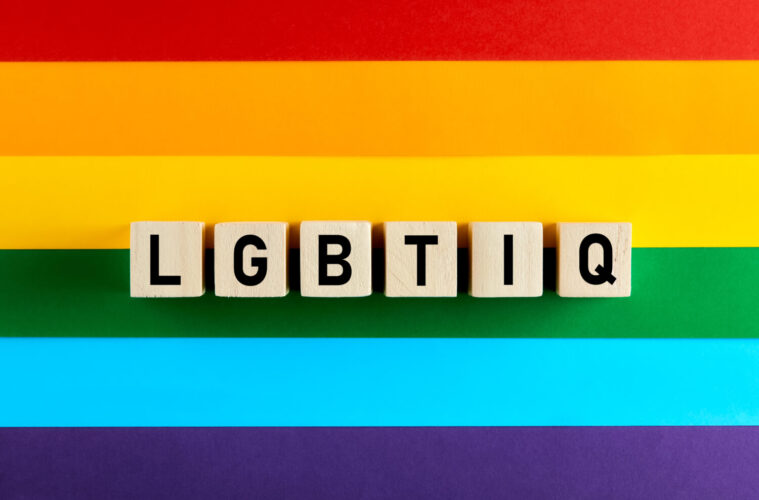In recent years, many members of the LGBTQIA+ community have been able to express themselves better than ever before. But with so many terminologies pertaining to a person’s sexual orientation and gender identity, it can be confusing to keep up with!
Here are a few LGBTQIA+ terms.
Words Pertaining to Sexual Orientation and Gender Identity
1. Gender identity
Gender identity is your innermost belief or feeling of what you identify as. You can be a man, woman, transgender, and so on. Your gender identity is internal. It has nothing to do with which body you’re in. For instance, you can be born as a woman — with a woman’s body — but you identify as a man.
2. Cisgender
Cisgender people are individuals whose body they’re born in aligns with the traditionally-accepted type of person they’re supposed to be attracted to. If you’re born a woman who’s attracted to a man, that makes you a cisgender woman.
3. Transgender
Transgender people are considered to be the opposite of cisgender people. Transgender people typically feel as though they’re born in the “wrong” body — as they can be born as a man but they identify as a woman. However, being transgender doesn’t define their sexual orientation. Sometimes, some transgender people identify as a woman — despite being born a man — but they’ll still be attracted to a woman. Which, in societal norms, would make it seem that they’re cisgender.
4. Sexual orientation
Your sexual orientation depends and can be defined by the type of people whom you feel romantic and erotic feelings for. If you’re a cisgender woman who’s attracted to men, your sexual orientation is “straight.” On the other hand, if you’re attracted to both genders, you can then consider yourself bisexual.
5. Transition
Those who undergo gender transition typically go through certain processes to change their outward appearance that may align with their identity. For instance, some undergo hormone replacement therapy in order to appear more masculine or feminine. But others also undergo sex reassignment surgery. However, gender transition can sometimes be as simple as changing their hairstyle, and clothing, others put on makeup.
6. Gender dysphoria
Gender dysphoria is a clinical term that’s under the Diagnostic and Statistical Manual of Mental Disorders (DSM-5). Transgender people typically need to be diagnosed with gender dysphoria in order to receive hormone replacement therapy or sex reassignment surgery.
7. Queer
Queer is a broad term. It also has a few synonyms (non-binary, genderqueer, etc.). It typically means a person whose identity does not conform to societal standards. The word “queer” used to be a slur. However, the LGBTQIA+ community reclaimed the term. Therefore, if you’re going to use the word “queer,” be sensitive about it. Never use it to purposefully offend the members of the community.
8. Gender expression
Gender expression is how you express your gender identity externally. You can express it via dressing or acting “masculine” or “feminine.” Again, a person’s gender expression doesn’t always conform to society’s standards.
9. Drag
Drag is the art of performing while dressed up as a specific gender (and it’s not always the opposite gender). Drag performances are usually camp and theatrical. Some drag performers do this as a form of parody, some perform avant-garde acts, while others perform to simply make a statement. Drag performances can be in the form of singing, dancing, or acting. How a drag artist performs or dresses up doesn’t define their sexual orientation and gender identity; some cisgender male performers dress up as women.
10. Intersex
Intersex is a sexual characteristic that isn’t exactly the type that can be categorized as the traditional “male” or “female.” A person can be intersex because of their hormones or their genitals. For instance, in most states, a doctor has to provide the gender of the newborn. It’s typically either female or male. However, sometimes, the hormones or reproductive organs may be different from their internal organs.
11. Asexual
Asexuality is a sexual orientation. People who are asexual barely feel sexual attraction toward any gender — some don’t feel any, at all! However, many of them still feel romantic connections. Some get married and even have kids.
12. The “Plus” in LGBTQIA+
LGBTQIA+ is a welcoming, inclusive, and accepting community. Therefore, anyone whose sexual orientation and gender identity isn’t the typical “straight” or “cisgender”, whose Sexual Orientation and Gender Identity doesn’t fit into an existing mold, represents the plus sign in the LGBTQIA+ community. Even if there isn’t a term for them (yet?), and even if there isn’t a color or flag to represent them yet.
Taking This Into Account,
The topic of pronouns is an ongoing issue. Many members of the LGBTQIA+ community wish to have the right to decide what their pronouns should be. As much as possible, respect their wishes. Furthermore, for several decades, the LGBTQIA+ community fought for their basic human rights to be respected and observed. However, many of them still face discrimination, bullying, and hate crimes. Do your best to stand up against this and continue to respect the LGBTQIA+ community.
Conclusion
The LGBTQIA+ dictionary is ever-evolving. Many of the community’s terminologies can be quite confusing — such as gender expression, sexual orientation and gender identity. It’s never wrong to ask a member of the community to help you out. However, it’s still better to have the initiative in learning about the list of terms yourself — it’s one simple task that can be considered to be a form of support for the community. In return, they’d greatly appreciate your efforts!
Advertising disclosure: We may receive compensation for some of the links in our stories. Thank you for supporting LA Weekly and our advertisers.

